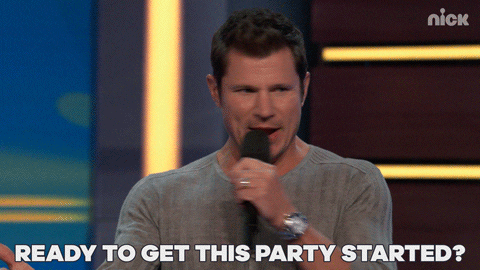A student recently described campus to me as a scene out of a wild west movie, complete with tumbleweed rolling across the street; students come out but keep their heads down and masks up. There is little interaction due to the pandemic.
Pandemic policies made it difficult (or even impossible) to hold in-person programs, and even during non-pandemic times, it can be hard to get students to attend events. So, consider literally erasing the wall between you and them by going straight to places where students naturally gather — like hallways and sidewalks!
Hallways and sidewalks have great potential for captive audiences. You can set up interactive or passive programs that are fun, social, informative, and cultural.
Interactive Activities
These events require participants to get hands-on with the activities.
Students will benefit from these by getting to know their peers while de-stressing a bit. Student organizations may enjoy utilizing these methods as a way to build communities and to recruit new members.
Interactive activities work best when a few student volunteers are present to invite others to participate.
You can make these activities more COVID-safe by spacing each booth or table far apart, providing hand sanitizer and wipes for equipment, and if possible, allowing students to take parts of the activity home with them. For example, you could give out small paint sets so students can complete an art project back in their res hall.
1. Yard Games
Bring out the cornhole, KanJam, ladder ball, Spikeball, bocce, and other beloved games. Although many students will already know these games well, you should still print out instructions. Simplified how-to flyers attached to yard stakes work well.
2. Giant Board Games
Pull out some classic board games — such as Jenga, checkers, Connect Four, and Scrabble — for students to enjoy on the lawn.
This can be a lot of fun, especially if you have music playing from either your own playlist or a student DJ. Offer food to help draw people in; it can be prepackaged snacks, like chips or pretzels, or a food giveaway, like milkshakes, crepes, or nachos.
In addition to the play-for-fun option, you can set up a tournament in which students compete to win prizes, like these fun swag ideas.
3. En Plein Air Painting
French for “outdoors,” en plein air painting is intended to be free from predetermined images and rules of academia and studio art. Set up tables with chairs and paint kits, inviting students to hang out and create some expressive works.
I’ve found that students like to paint at their leisure with little guidelines, so no professor or other art expert is necessary unless you want to better inform the students of methodology.
You could provide written prompts or set up easels in front of a scenic area to inspire students. I also suggest doing pre-registration so you’ll know how many kits to prepare.
4. Poetree
Dedicate a tree along a walkway for students to write positive notes or poems beneath. This can be a good-themed activity wherein students write messages about being good stewards of the earth for Earth Day or write things that they are thankful for around Thanksgiving. Some students may prefer drawing instead of writing.
Set a table for students to write on, supplying paper and pens. As an incentive, you could allow students to take the pens or markers home with them afterward. Then, use clothespins or string to hang the paper messages on your designated poetree.
5. Soapbox
As a civic engagement initiative, get a wooden box that is sturdy enough to hold an individual student’s weight. Be sure to also mark off a surrounding area as an alternative “stage” for any students who physically can’t stand on the box or would simply prefer not to.
Invite students to stand on the box (or in the marked-off area) to declare their truths. I suggest offering a topic, like “what do you hope for the future of humanity?” or “if you were running for office, what policies or ideals would you stand for?” Supply a microphone or megaphone for students to use. Also, place a sign stating that this is a public, institution-sponsored event and that all speeches must reflect community values or the student code of conduct.
Having a staff member present can also help deter any hate speech. This is a good activity to partner with a student organization, based on your theme. Ask the org to have student leaders volunteer as participants and speakers, plus invite their friends.
6. Tie Dye
Create pre-assembled tie-dye kits that include rubber bands, gloves, shirts, and post-event instructions for washing. To facilitate the activity, simply fill up buckets with dye for students to dip their shirts into.
Alternatively, you could pre-package a few squirt bottles with dye and invite students to take the kits back to their homes to tie-dye there. No matter where it is taking place, reduce the chances of staining anything by doing it in a field with buckets of dye or a sink that you clean immediately after finishing. Although this won’t be a sidewalk or hallway activity, you’ll still catch students in spaces they’ll likely pass by or hang out around.
7. Zen Garden
Creating a zen garden is a way to reduce stress, improve focus, and develop a sense of well-being. Raked sand or gravel with rocks are the main elements of a zen garden.
To keep things affordable and easy, you can provide students with small desk gardens. Or you could consider setting up a permanent or temporary outdoor zen garden for students to interact with. You may need to consult your groundskeeper and have a plan for the materials afterward if it’s temporary.
Installations
These activities only require setting up, then letting them run themselves. Students can simply observe, enjoy, and learn!
8. Polka Dot Hallway
Educational settings invite us to see things a little differently to make new learning connections, but sometimes, everyday learning structures become quite boring. For example, walking down the same old hallway that’s plastered with flyers may not capture students’ attention.
So, try transforming a hallway into an immersive experience! One artist you may be inspired by is Yayoi Kusama, a Japanese contemporary artist best known for her polka dot art. Perhaps you can transform a hallway with paper polka dots and post information about her. If you have another artist in mind, try transforming a space with their work.
10. 1,000 Origami Cranes
This could make for a great ongoing project that culminates in a hallway installation.
The crane is a symbol of success and good fortune in Japanese culture, and when folded into origami, an ancient Japanese legend says that your heart’s desire will come true.
Set up a crane-making party in which you provide paper and instructions or distribute kits for students to take, make, and return. If you have just 100 students make ten cranes each, you’d have a beautiful display in no time! Simply string the cranes together and hang in a popular campus location. Hopefully all 1,000 wishes come true! Not only is making the cranes wonderfully meditative but it will also result in a stunning display.
10. Trash Pile
Work with your groundskeepers to create an installation of trash from your campus. The visual of how much garbage your campus as a whole (or specific building) produces can have a major impact on revealing how much trash the campus produces. Students often don’t consider this impact whenever they throw garbage in the trash can. But it really adds up!
Of course, this activity will probably be quite smelly and unattractive, hopefully prompting students to rethink the waste they create in the future. You could also filter garbage to have students create structures, like people, buildings, or trees. Regardless, posting information about the amount of garbage and recycling will make it extra informative.
11. Video Projections
Take your civic engagement and informational videos or documentaries outside to catch students as they’re traveling past. For example, project a video about racial inequalities for MLK Day or a video about the history of the First Nation for Indigenous People’s Day.
You can set up a projector or use the side of a building. You can also set up some chairs for students to sit and watch. I suggest projecting short clips that people can view as they pass by, hopefully tempting them to stop and watch more.
12. Performances
Work with your performing arts department to host performances in hallways or along sidewalks. These can be short pieces or short improv games. You can certainly give passersby an opportunity to participate, but most likely they will be on the way to a class and watch for a short while.
Bonus Tips
Think about what spaces will serve which activities best. Installations in a less-traveled hallway that is wide enough for people to stop and look can have more in-depth detail — whereas, a smaller, well-traveled hallway will better serve simple installations that people can observe quickly while on the move.
Remember to never block hallways or sidewalks for fire safety. If your activity is linear with a clear start and end time, keep it as short as possible so you can catch pedestrians passing by.

What ideas did we miss? We’d love to learn about the activities you’ve offered in hallways and on sidewalks! Connect with us on Twitter @themoderncampus.





